Updated 2023 – Official Vegas Solitaire Rules.
The official Vegas Solitaire rules apply to the online game offered on this website. The rules apply to both the fun and the real money modes. The Vegas Solitaire game rules described here are similar to how Solitaire originally was played in Las Vegas casinos and gambling houses throughout the United States and Canada, where “Seven Card Klondike” was invented.
Vegas Solitaire Rules in an easy step-by-step Tutorial
The Object of the Game
The object of the game of Vegas Solitaire is to win money. You do this by playing as many cards as possible to the Foundations. For each card played away, you will receive a payout based on your chosen bet.
Vegas Solitaire is played with a 52-card deck with no jokers. If you manage to play 11 cards to the Foundations, you break even; any card after that is a win.
Vegas Solitaire Rules – Placing a Bet
Every game starts with placing a bet, whether you play for real money or use fictitious funds to play for fun. Start by selecting your bet amount. The betting screen will tell you how much you win for each card you play to the Foundations.
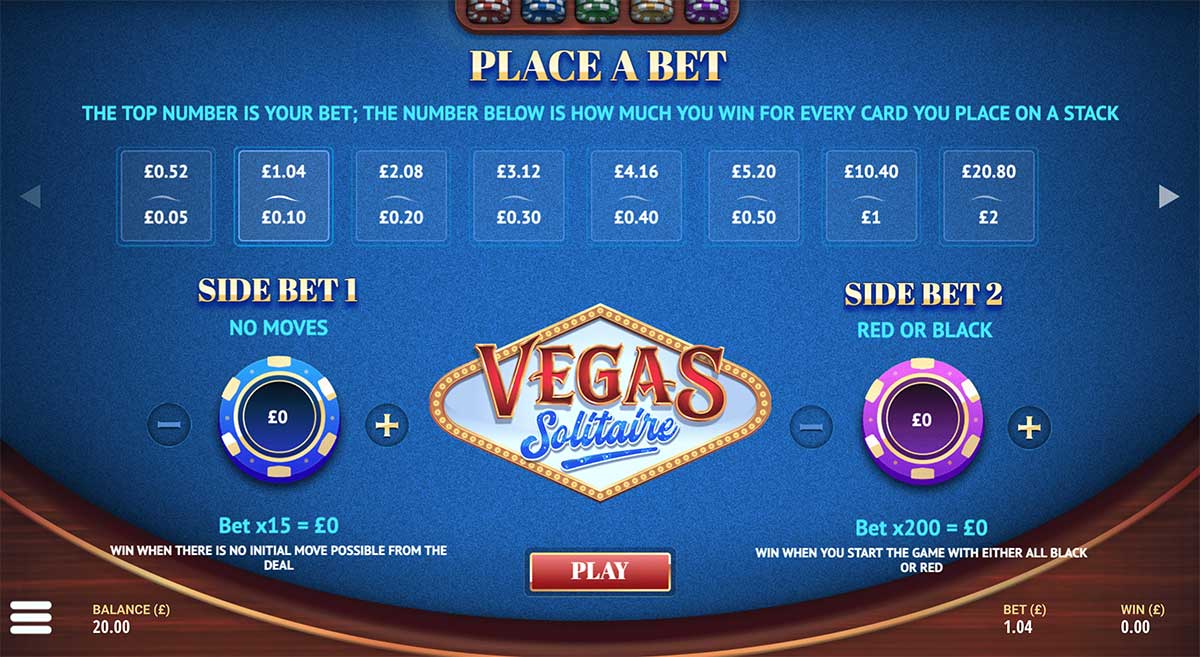
When playing Vegas Solitaire for real money, the betting stakes are always based on the following bet ratio:
- $52 redemption and $5 payout per card played on the Foundation.
- When you complete the game, you will receive 5x your original bet.
- In addition to the standard bets, it is possible to place side bets on Vegas solitaire.
There are two different side bets possible that can increase your winnings. These are placed before the cards are dealt:
- No Moves – When the player cannot make any moves.
- Red or Black – When all the cards on the Tableau are all red or black.
Vegas Solitaire Rules – Setup
The Layout
As with all games of Solitaire, the cards are dealt by the dealer, left to right, with incremental increases in each of seven piles. These are also known as rows or columns. The triangular layout consists of the following elements: Tableau, Foundation, Stockpile, and Waste Pile.
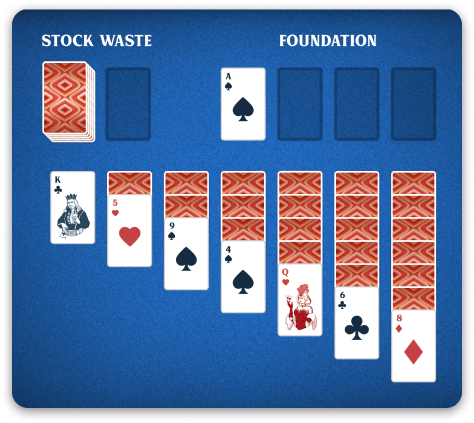
The Tableau
The Tableau consists of seven rows from left to right. After shuffling the deck of cards, the dealer deals the first 28 cards, one at a time, across the seven rows. The cards are dealt row by row, increasing as you go along. The first row consists of one card, the second of two cards, and so on until the seventh row, seven cards are placed. The cards are dealt face down. Once the cards have been dealt, each row’s top card is turned face-up.
- Column 1 – One card, face-up
- Column 2 – One card face down – top card face up
- Column 3 – Two cards face down – top card face up
- Column 4 – Three cards face down – top card face up
- Column 5 – Four cards face down – top card face up
- Column 6 – Five cards face down – top card face up
- Column 7 – Six cards face down – top card face up

The Foundation
There are 4 Foundations for each suit in the deck: Hearts, Spades, Diamonds, and Clovers (also known as Clubs.)
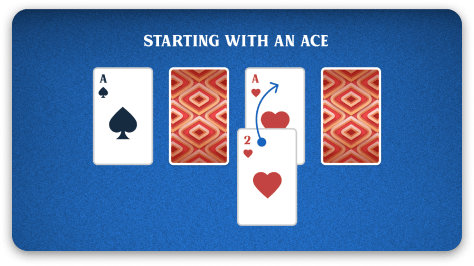
The Stockpile
After the Tableau is dealt, there are 24 cards left. Those 24 cards are placed face down.
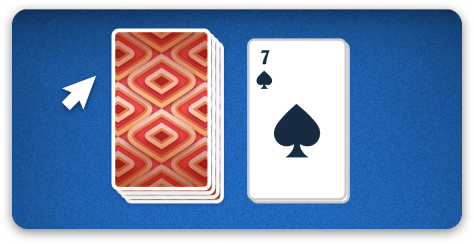
The Waste Pile
After all the cards have been dealt, the Waste Pile remains empty until the first card is dealt. The Waste Pile is the space next to the deck where you place a card that you turn over from the Stockpile. The Waste Pile, therefore, only consists of dealt cards. The top card of the Waste Pile is the card you can bring into play.
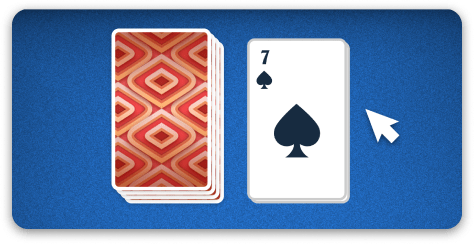
Value of the Suits and Order of Play
According to the Solitaire rules, you can play the Suits as they appear. There is no priority or rule that you need to play a particular Suit first. In Solitaire, cards placed on the Foundation by suit go in ascending order; on the Tableau by descending order.
The order of the cards in Vegas Solitaire is:
Ascending order on the Foundation
These are placed by suit only, in this order:

Descending order on the Tableau
Alternating between red (Hearts & Diamonds) and black (Spades & Clovers)

Solitaire is a puzzle where you have to move the cards according to specific rules. Cards may only be moved when they are placed in descending order from one another. So a 10 gets played under a Jack, a Jack under a Queen, and a Queen under a King. In addition, there are also rules about moving entire or partial rows of cards. You can read how this works below.
Gameplay Rules
After the cards have been dealt, it is the player’s turn. Each of the seven rows will be built in descending order with alternating black and red suits. For example, a black five, red four, black three, and a red deuce (two.) This is done by playing the dealt card or moving one or more cards between rows.
Moving cards
The player may only move “face-up” cards that are exposed in any row or exposed on top of the Waste Pile, where dealt cards appear.
1. Moving cards between rows at the Tableau
The aim is to expose all the cards on the Tableau and get them into play. You can achieve this by moving cards to the other Tableau rows or to the Foundations. The following are ways to move cards from row to row and according to the Rules of the Tableau:
- Move one top card
- Move a full row
- Move part of a row
Each time you move a card, part of a row, or an entire row, a new card is exposed for play. The only exception is if, when moving an entire row, an empty space is left. When there are no cards under the row that is moved, the remaining empty space can only be filled with a King or a row of cards of which the top one is a King.
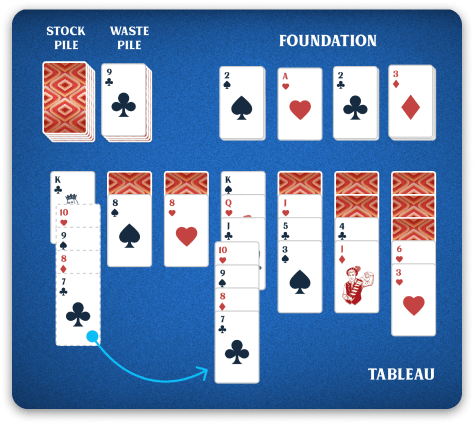
2. Move cards to the Foundations
The Foundation consists of 4 different columns, one column for each suit. You can move a card from either the Tableau or the Waste Pile. The following rules apply to placing cards on the Foundations:
- Each Foundation starts with an Ace.
- Foundations are built from Ace, 2, 3, 4, etc., up to the King.
- Foundations are built by suits.
- At the end of the game, for every card you play to the Foundation, you get paid per card.
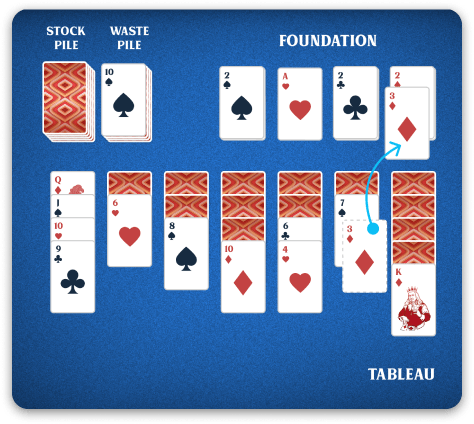
3. Moving cards from the Foundation back to the Tableau
In some situations, it can be helpful to play cards back from the Foundation to the Tableau.
You may then only play the top card of a particular Foundation back to the Tableau. According to the Rules of the Tableau, this card can then be placed at the bottom of any row.
When you move a card back from the Foundation to the Tableau, the value of that card is deducted from the winnings. When you then manage to play the card back to the Foundation, the winnings are added again.
This technique is known as “Worry Back.” You can learn more about “Worry Back” on the page about the Vegas Solitaire strategy.
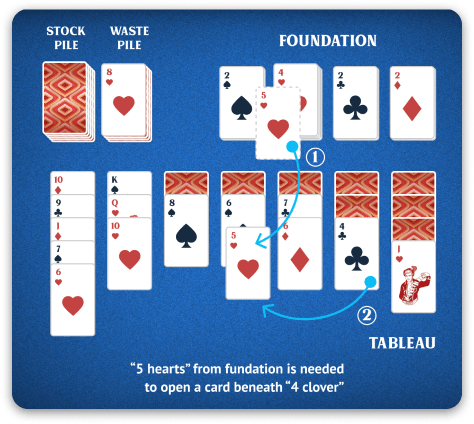
4. Drawing Cards from Stockpile
According to the authentic Vegas Solitaire rules and the old rules describing Klondike as a gambling game, the game is officially only offered in the “turn 1” card version. This means that you may turn over 1 card at a time when you turn over a card from the deck. This card is dealt to the Waste Pile, face-up, ready for play. You can only go through the deck once, so there is no re-deal.
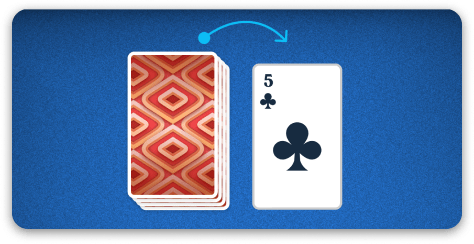
5. Moving cards from the Waste Pile
- A card on the Waste Pile is always face up.
- Only the top card of the Waste Pile is available to play.
- You can play cards from the Waste Pile directly to the Foundation or any of the Tableau rows.
- In case several cards are piled up on the Waste Pile, you may only play the top card.
- When you play the top card, you may turn over the next Waste Pile card, which becomes available to play again.
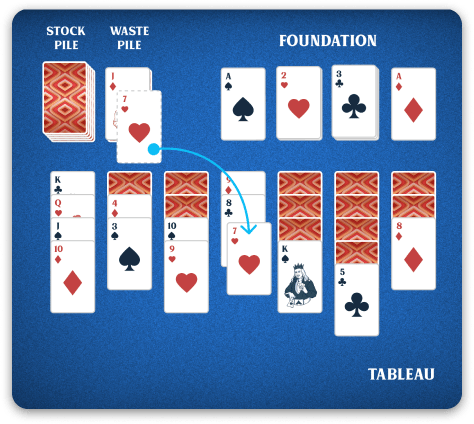
Payouts
When you have finished a game, all cards on the Foundation are paid out per card. When you have managed to get rid of all the cards, placing them all onto the Foundations, you win five times your bet. We refer you to the Vegas Solitaire Payout Table for a complete overview of all possible bets and payouts.
Vegas Solitaire Rules – Online Features
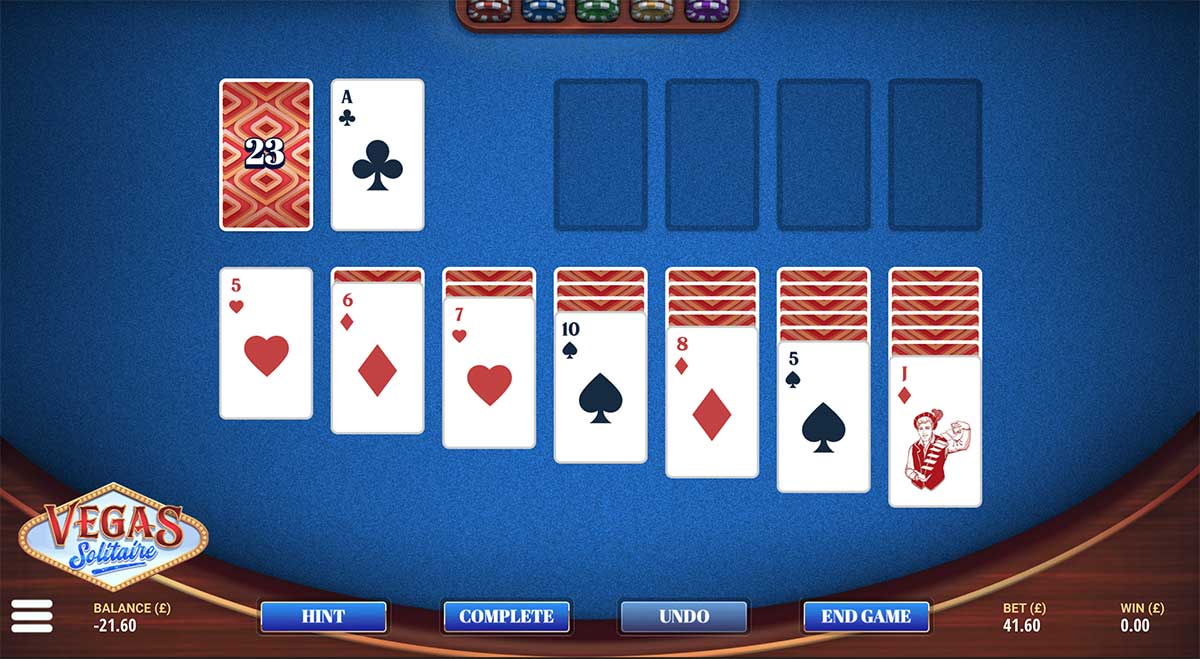
When playing Vegas Solitaire free online, the following additional rules apply:
Undo/Restore button
If you make a wrong move, you can use the Undo button.
- You may only use the undo/restore button once per turn to undo your last action.
- It is impossible to use the undo/restore button if your last action has cleared a card at the bottom of a row of the Tableau, and as a result, a new card was exposed. For instance, moving a card to another row reveals a new card for play. The undo/restore button cannot be used once this action has occurred.
Complete Function
When you press the “Complete” button, the game will be played automatically according to the best strategy for Vegas Solitaire. The AutoPlay feature will always try to complete the game as far as possible and generate the highest potential profit. However, as with manual play, the AutoPlay function is not guaranteed to finish the game.
End Game
With this button, you end the game immediately. Cards placed on the Foundation will be paid out with either money or points, depending on which game you play.
Hint Button
When you can’t go any further, you can use the Hint button to see if there are still possible moves according to the Optimal Strategy.
DID YOU KNOW?
During the Gold Rush, Dawson City Gambling Houses offered Klondike Solitaire, which was originally played with identical rules and payout structure as Vegas Solitaire today.